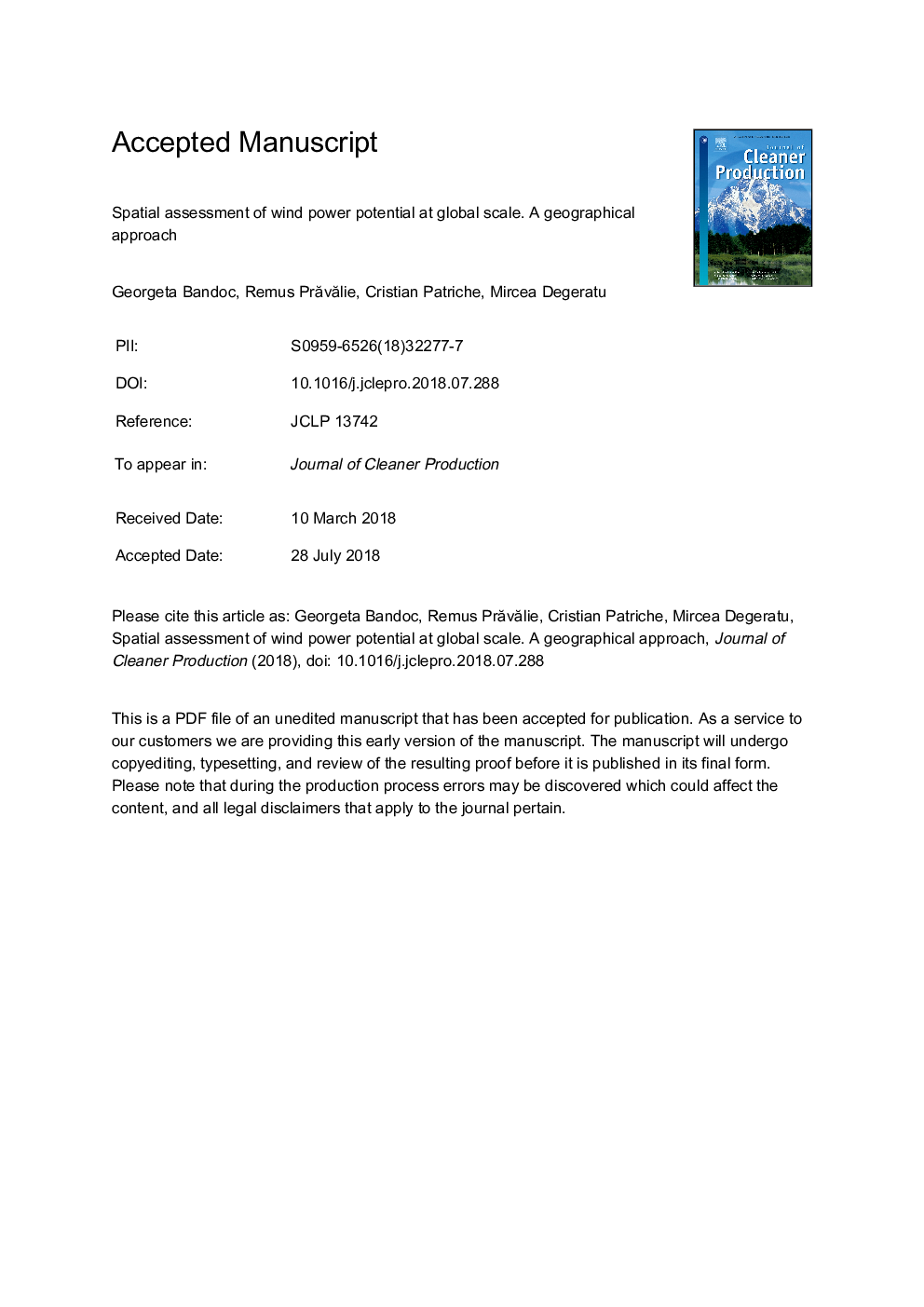| کد مقاله | کد نشریه | سال انتشار | مقاله انگلیسی | نسخه تمام متن |
|---|---|---|---|---|
| 8093437 | 1522052 | 2018 | 44 صفحه PDF | دانلود رایگان |
عنوان انگلیسی مقاله ISI
Spatial assessment of wind power potential at global scale. AÂ geographical approach
دانلود مقاله + سفارش ترجمه
دانلود مقاله ISI انگلیسی
رایگان برای ایرانیان
کلمات کلیدی
موضوعات مرتبط
مهندسی و علوم پایه
مهندسی انرژی
انرژی های تجدید پذیر، توسعه پایدار و محیط زیست
پیش نمایش صفحه اول مقاله

چکیده انگلیسی
Wind power is a renewable source of great value for the sustainable development of society in the context of global environmental changes. This power source features many advantages such as accessibility, inexhaustibility and sustainability, and its harvest and conversion have experienced a rapid growth in both developed and developing countries. The present study aims to geographically analyze the distribution and intensity of onshore wind resources (assessed using the wind power density parameter) globally, continentally and nationally. Using the most recent and detailed global spatial data on wind power density, which were classified after NREL (National Renewable Energy Laboratory) in seven potential classes, our results showed that, globally, there are five major hotspots of abundant wind resources, delimited based on the large-scale presence of the most favourable potential classes, i.e. Excellent (500-600â¯W/m2), Outstanding (600-800â¯W/m2) and Superb (>800â¯W/m2), also called in our paper EOS classes. These hotspots consist of the central-northern region of North America, southern South America, northern/north-western Europe, northern Asia and the central-south-eastern region of the Asian continent. These regions bring together most of the entire global area of EOS classes, which totals â¼4 mil km2 or â¼3% of the world's land area. Continentally, the most extensive EOS areas are found in Asia (â¼1.5 mil km2, 3.5% of the continent), followed by North and Central America (â¼1 mil km2, 4.3%), South America (â¼0.7 mil km2, 4.1%), Europe (â¼0.5 mil km2, 5%), Africa (â¼0.1 mil km2, 0.4%), and Australia and Oceania (â¼0.1 mil km2, 1.3%). Nationally, it was found there are 8 epicentre-countries for wind potential (with absolute EOS areas that range between 0.1 and almost 1 mil km2 across the countries), namely China (â¼0.9 mil km2, 10% of the country), followed by Canada (â¼0.6 mil km2, 6%), the United States (â¼0.5 mil km2, 5%), Argentina (â¼0.4 mil km2, 14%), Russia (â¼0.4 mil km2 in total, in Europe and Asia, 2%), Chile (0.2 mil km2, 28%), Norway (â¼0.1 mil km2, 30%) and Afghanistan (â¼0.1 mil km2, 16%). Results show these countries are the most suitable for large-scale wind power installations in the world. Also, our findings not only provide an overall image of wind resources availability worldwide, but they can also be a useful tool for the transition towards a carbon-free global economy, by helping world governments better understand - and subsequently use - their wind resources at regional or local levels.
ناشر
Database: Elsevier - ScienceDirect (ساینس دایرکت)
Journal: Journal of Cleaner Production - Volume 200, 1 November 2018, Pages 1065-1086
Journal: Journal of Cleaner Production - Volume 200, 1 November 2018, Pages 1065-1086
نویسندگان
Georgeta Bandoc, Remus PrÄvÄlie, Cristian Patriche, Mircea Degeratu,